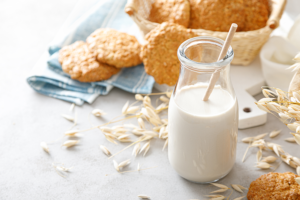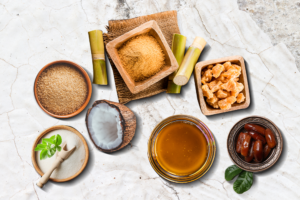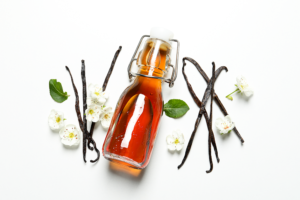It wouldn’t be an exaggeration to say colour is central to the food and beverage industry. Such is its impact on consumer preference that we’re constantly experimenting and innovating to arrive at the right shade and delectable tint on our plates.
Why? The color of food sets expectations up even before you’ve had the chance to bring it to your mouth. It is the first sensory cue one comes across. This is where the psychological impact of food color plays a significant role. Colors can evoke emotions, set expectations, and influence our perception of taste and quality. For manufacturers, this should matter a great deal. We perceive quality, flavour, and ripeness through sight, processing visual information to determine whether something is good enough to consume.
Science aside, read on to learn about food colour applications and how to choose the right colour for your products, besides understanding food colour differences. In an industry that’s about tiny margins, it’s all about looking really, really good.
What Are Food Colours?
So, what are food colours exactly? They’re any dye, pigment, or other substance that can impart colour to a food. It’s that obvious, but here’s a little history: While adding colour to food has been a practice since time immemorial, people began extracting both natural food colourants and synthetically produced versions in the second half of the 1800s, opening the gates for the bright assortment of items everyone is now accustomed to on a baker’s display. Over time, food processing advanced and regulatory frameworks were introduced, leading to the current state of the food and beverage industry. As for the ‘why’, colour is added to food for various reasons—to add drama to colourless foods, to correct natural variations in colour, and to improve naturally occurring colours, among others. In brief, food colours enhance product appeal. For instance, alarms go off when we encounter colourless food due to the perceived association of inferiority. And as mentioned earlier, the lack of colour could also influence how we sense the taste of such food, thanks to our brain chemistry. A little colour correction would go a long way in winning us over.
Food colours are of two kinds. Dive into their differences below.
Key Differences Between Natural and Artificial Food Colours
Source and origin of colourants
Natural food colours like grape skin extract and turmeric are extracted from pigments and compounds found in plants; artificial colours are synthesised chemically in labs (FD&C Blue Nos. 1 and 2, Orange B, etc.).
Stability and shelf life
Natural food colours are slightly less stable than their artificial counterparts and could be prone to colour degradation over time when exposed to light and heat. But it’s nothing too serious, and they retain their overall quality.
Cost and availability
Natural food colours have traditionally been slightly more expensive due to the complex extraction processes involved, but recent innovations could soon change that. Their availability might also depend on seasonal fluctuations while artificial dyes are more readily available.
Consumer perception and demand
Natural food colours are increasingly favoured by health-conscious people who want to distance themselves from the potential health implications of artificial colours. Synthesised colours pass stringent checks, but there still exists a negative impression among sections of people.
Regulatory considerations
Natural food colours are generally considered safe and have fewer regulatory restrictions. Most natural colours in some countries are exempt from certifications. This differs from the severe scrutiny over artificial colours, with the jury still out on their use. (The detailed regulatory requirements for various food colours can be found in the Food Safety and Standards (Food Products Standards and Food Additives) Regulations, 2011.)
Applications of Natural and Artificial Food Colours
Both types of food colours have uses in various applications. You’ll find them in beverages, bakery products, dairy products, savouries, confectionery, meat and poultry, and practically every other food product. Many processed foods have colouring in them—if its something off a supermarket shelf, there’s every chance it contains some colouring. If you spot a blue-coloured sports drink, you can safely bet it’s down to anthocyanin. In contrast, some popular condiments and jams could owe their visual appeal to tartrazine.
Choosing the Right Food Colour for Your Product
It is true there is a food colour for every season and reason, but selecting the appropriate one for a product isn’t always simple. There are several factors to consider before settling on a food colour for a particular product:
- Target market: Where possible, it’s essential to gauge the target consumers’ sentiment towards natural/artificial colours. Additional market research into consumer preferences will ensure a product is in demand and not a case study of failure. (We suspect a plain-looking pizza will not be a hit with the young, happening crowd out there.)
- Product type: Depending on the product’s nature, manufacturers can take a call on the type of food colour needed. Artificial colours offer a deeper hue so that they might make sense for certain foods like cakes and desserts. Consider the food colour’s properties and how they might affect your product’s final appearance.
- Cost and functionality: It’s crucial to balance the cost of the food colour with its desired properties and availability. While natural food colours are a bit more expensive to extract, their health benefits are a big selling point.
And if you’re looking for natural food colours to bring your creations to life, then look no further than Symega’s range of innovative natural food colours. These not only enhance the visual appeal of food but also come with several advantages of natural food colour. They are safe, clean-label alternatives to synthetic colours, catering to the growing demand for healthier and more sustainable options. Sourced from the finest raw materials, formulated for multiple food applications, and stabilised and standardised to meet intense processing and packaging conditions, Symega’s natural colours suit a wide range of applications. Thoughtful, creative, and backed by deep knowledge of plant extracts and pigments, Symega’s various natural food colourants reflect the goodness of nature. Visit us here to learn more.
What’s the Consensus?
So, what’s the verdict then? Artificial or natural? The answer isn’t straightforward, even as we lean towards the latter for their organic benefits. Manufacturers have to assess consumer preferences, regulatory considerations, and product characteristics. However, the growing interest in natural food colour solutions is reshaping the market landscape. On the business front, certified artificial food dyes might be relatively cheaper. But innovation in natural food colourants could make them just as affordable in the days ahead. On the flip side, artificial colours aren’t exactly everyone’s favourite due to their perceived health effects. Natural colours are safe and generally exempt from certifications, and despite minor drawbacks, they are growing in popularity. Landing at the right visual recipe will involve a degree of trial and error and understanding how colours can work for your products. In the meantime, don’t rule out purple-coloured chips just yet.
FAQs
The impact on shelf life isn’t too prominent. Artificial food colours might possibly last longer than natural ones since the latter could be prone to degradation over time. Despite this chance, natural colours are not known to exhibit any terrible effect on the shelf life of products.
While natural colours can achieve vibrant hues, they may not always match the intensity and stability of artificial colours. This has no bearing on the taste that natural food colours offer and is merely a limitation of natural pigments.
The regulatory requirements are listed under the Food Safety and Standards (Food Products Standards and Food Additives) Regulations, 2011, and its relevant amendments. These regulations mention the types of additives that can be used and their specifications. Various standards of colours, their general requirements, and special considerations are clearly detailed. Storage instructions are also available for some materials.




